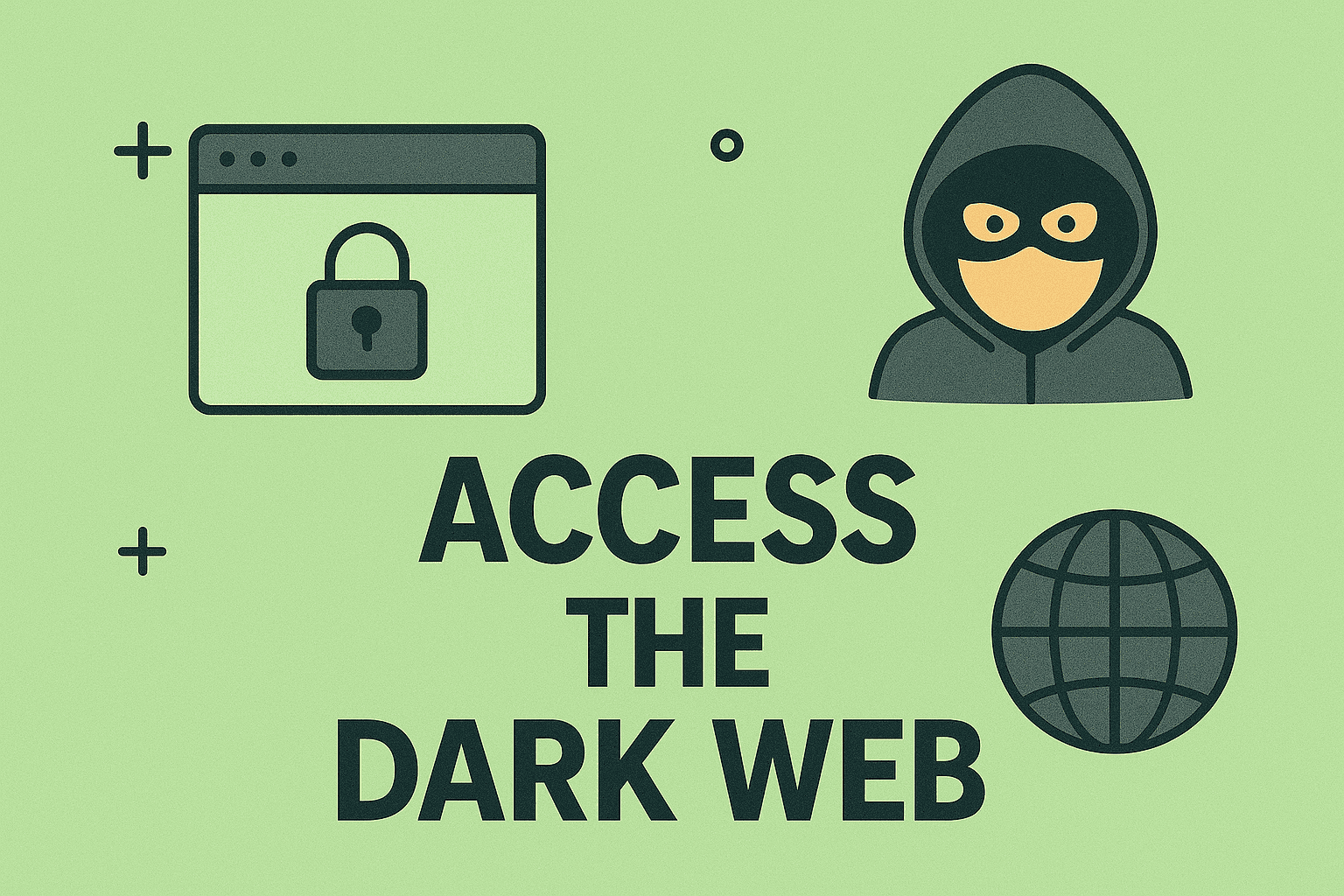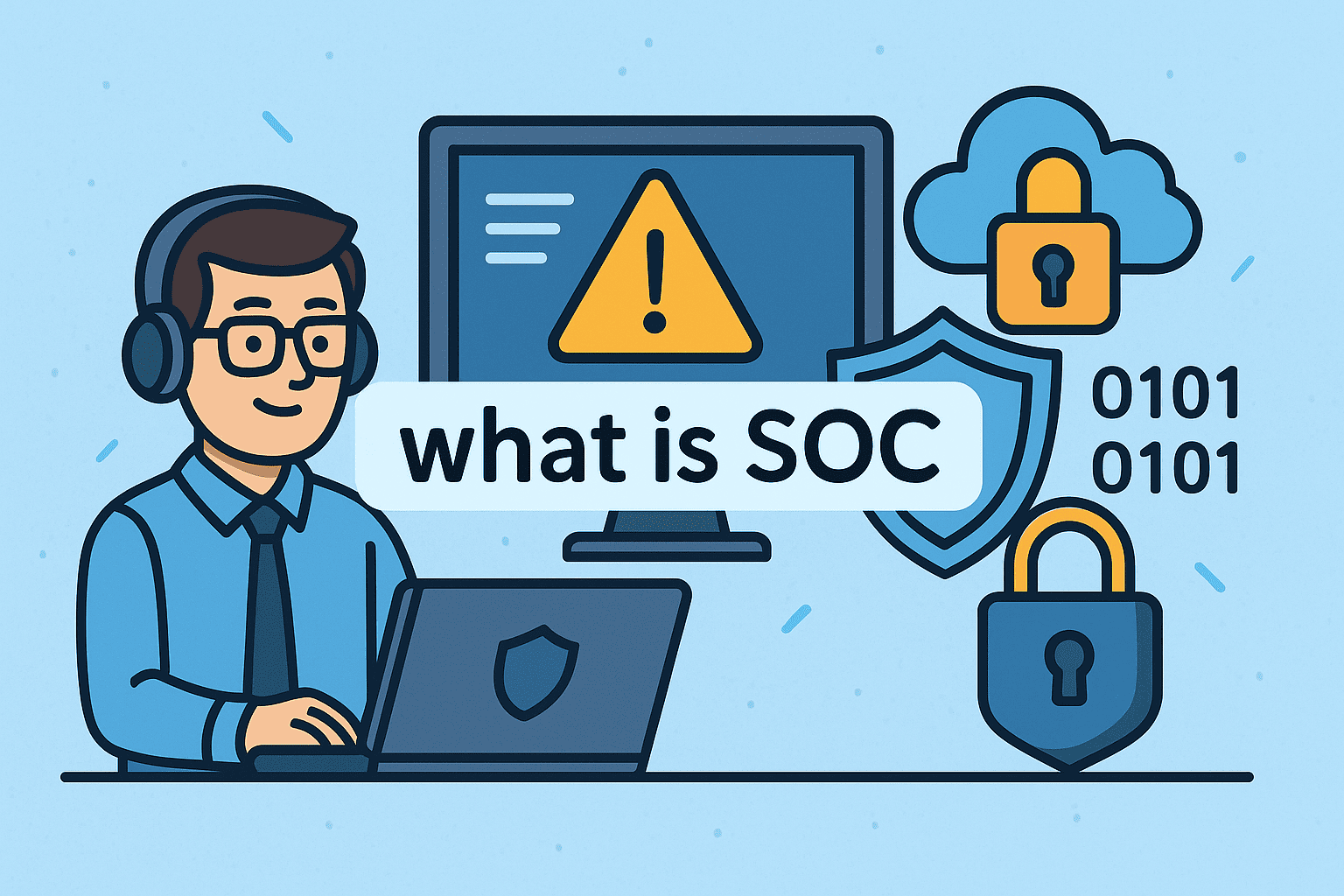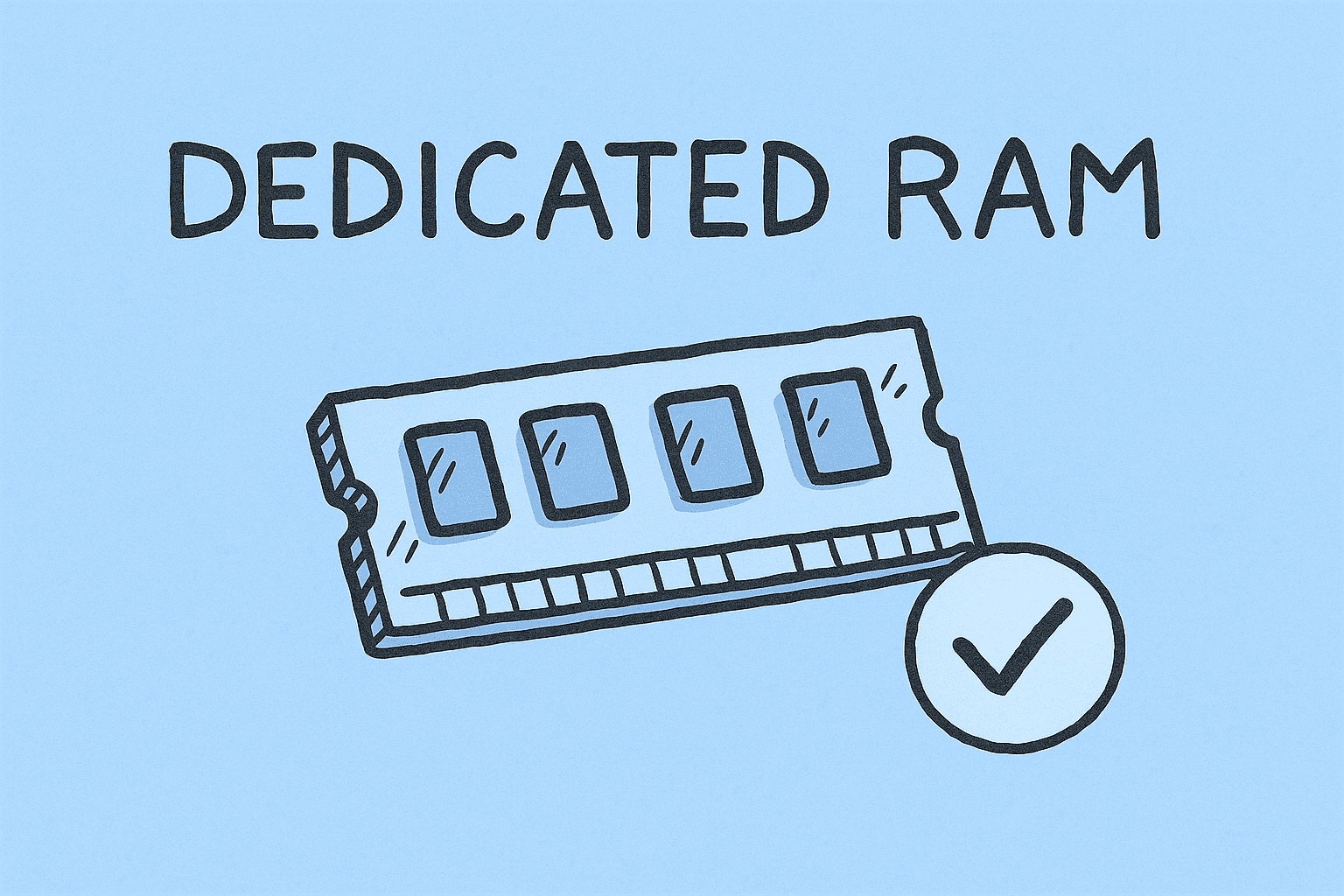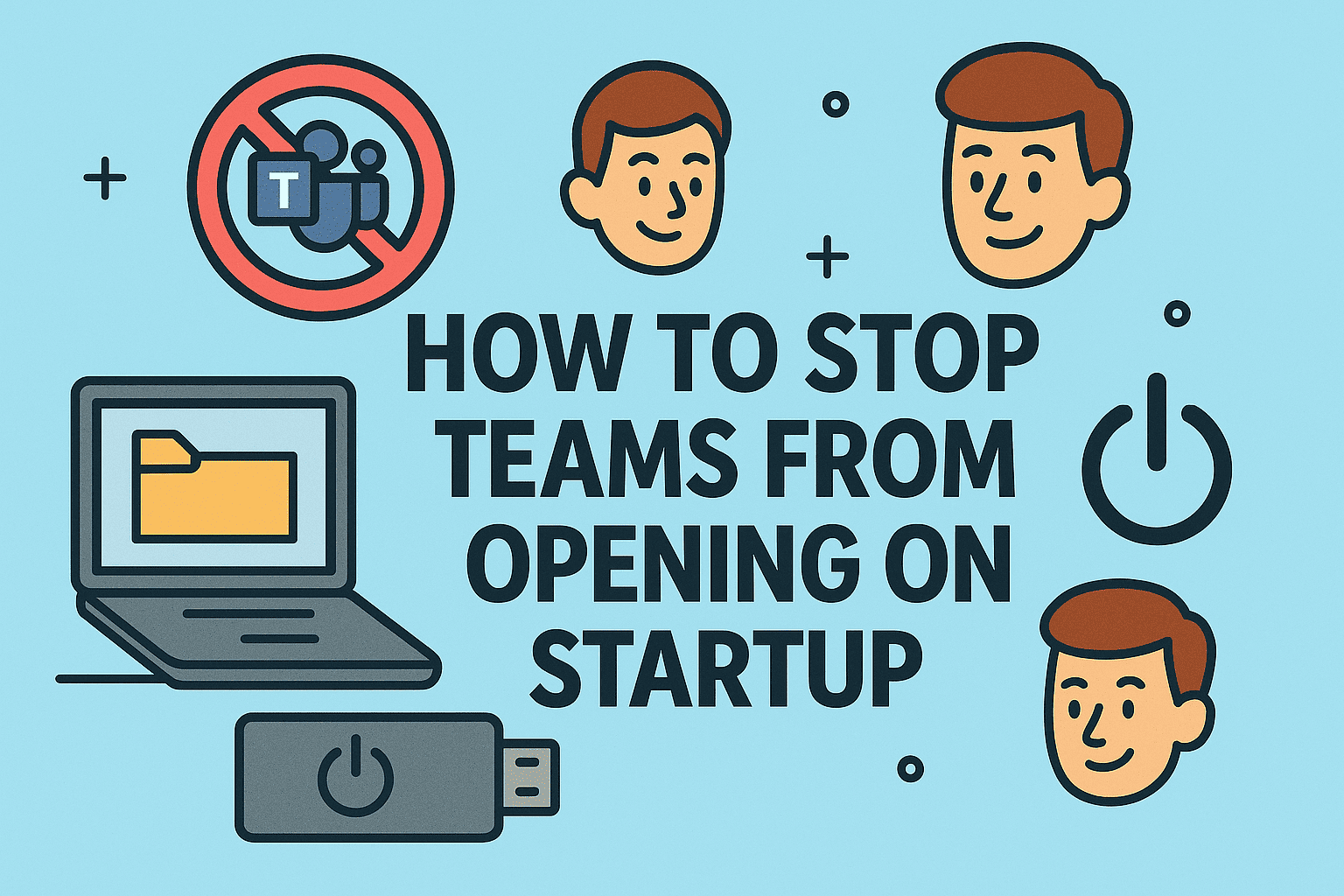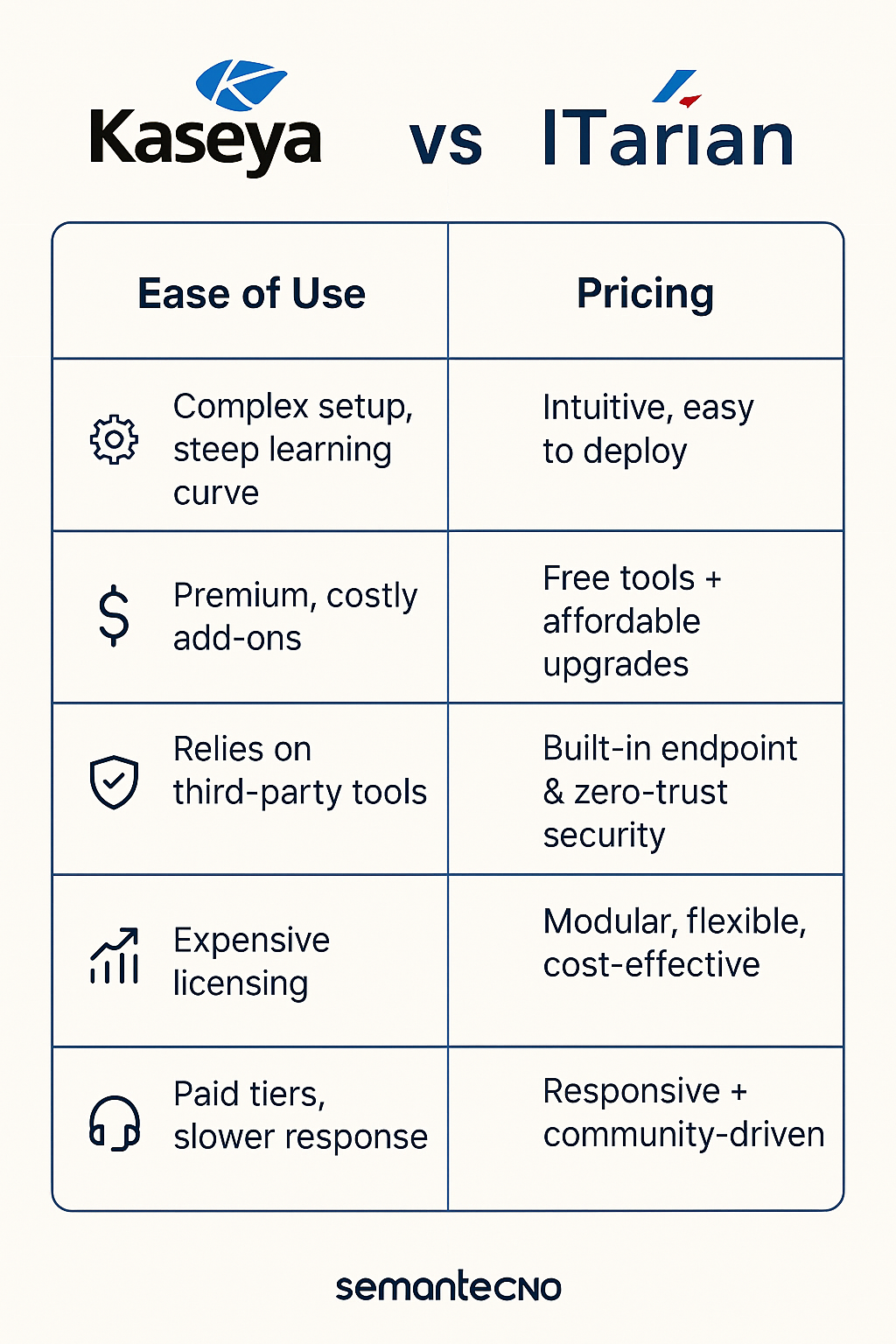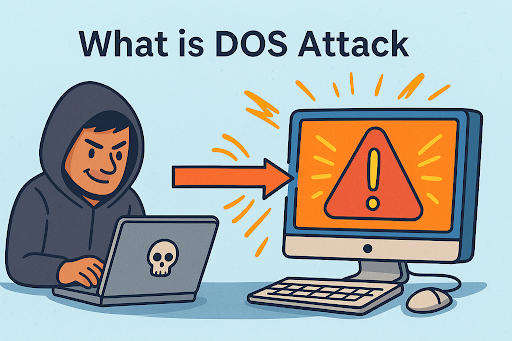What If Your Business Suddenly Went Offline?
Updated on June 6, 2025, by ITarian
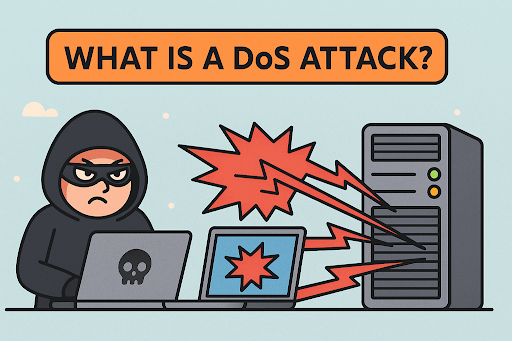
Imagine logging into your company’s website during peak hours—only to find it’s completely unresponsive. No pages load. No transactions complete. Your customer service lines are jammed. The likely culprit? A DoS attack.
So, what is a DoS attack, and why is it one of the most disruptive cyber threats facing businesses today?
For cybersecurity teams, IT managers, and business leaders, understanding DoS and DDoS attack techniques is crucial to protecting uptime, revenue, and trust.
What Is a DoS Attack?
A DoS attack—short for Denial of Service attack—is a malicious attempt to disrupt the normal functioning of a network, server, or service by overwhelming it with excessive requests. The goal is simple: make the system unavailable to legitimate users.
In its basic form, a DoS attack involves a single computer flooding a target with traffic or exploiting vulnerabilities.
DoS vs DDoS: What’s the Difference?
It’s easy to confuse the two, but there are key distinctions between DoS and DDoS attacks.
DoS (Denial of Service)
- Originates from one machine or network
- Easier to trace and mitigate
- Often used for testing or smaller-scale disruptions
DDoS (Distributed Denial of Service)
- Originates from multiple sources (botnets)
- Much harder to stop
- Capable of bringing down enterprise systems or websites for hours or days
💡 DDoS attack meaning: A cyberattack where multiple systems flood the bandwidth or resources of a targeted system, usually under the control of a command-and-control server.
Common Types of DoS and DDoS Attacks
To effectively prevent denial of service attacks, you must understand the various methods used:
1. Volume-Based Attacks
- Involve sending massive amounts of traffic
- Examples: UDP Flood, ICMP Flood, Ping of Death
2. Protocol Attacks
- Exploit weaknesses in layer 3 and 4 protocols
- Examples: SYN Flood, Smurf DDoS
3. Application Layer Attacks
- Target web applications directly
- Examples: HTTP GET/POST Flood, Slowloris
Real-World Impact of DoS Attacks
Business Disruption
- Sites and services crash, halting transactions
- Productivity drops due to inaccessible internal tools
Reputation Damage
- Customers lose trust
- Negative media coverage or social backlash
Financial Losses
- DDoS attacks can cost up to $300,000 per hour in lost revenue
Legal and Compliance Risks
- Unavailability of services may lead to non-compliance with SLAs
- Breach of availability clauses under GDPR or HIPAA
How Do Hackers Launch a DoS or DDoS Attack?
Step-by-Step Breakdown:
- Reconnaissance – Attacker scans for vulnerabilities
- Weaponization – Tools like LOIC, HOIC, or botnets are readied
- Execution – Target is bombarded with traffic or malformed packets
- Persistence – Attack is maintained until a goal is achieved (ransom, sabotage)
Warning Signs of an Active DoS Attack
Stay alert with these indicators:
- Sudden network slowdowns
- Unusual traffic spikes
- Inaccessible web apps
- Performance degradation across servers
Use tools like:
- Wireshark
- NetFlow analyzers
- Cloudflare or Akamai dashboards
How to Prevent DoS and DDoS Attacks
Being proactive is your best defense. Here’s what you can do:
✅ Network-Level Protections:
- Set up firewalls and intrusion prevention systems (IPS)
- Implement rate-limiting and traffic shaping
✅ Application-Level Security:
- Use WAFs (Web Application Firewalls)
- Monitor for unusual application behavior
✅ Infrastructure Hardening:
- Segment networks to limit exposure
- Choose hosting providers with built-in DDoS mitigation
✅ Cloud-Based Defenses:
- Use services like Cloudflare, AWS Shield, or Akamai Kona Site Defender
DoS Attacks by Industry: Who’s at Risk?
🏥 Healthcare
- Patient portals and EHR systems are DoS targets
- HIPAA requires service availability—outages can trigger audits
🛍️ eCommerce
- Outages during sales events = lost revenue and customer churn
📈 Finance
- DoS can disrupt online banking or stock trading platforms
🏢 Enterprise SaaS
- Internal collaboration tools like CRMs or ERPs become bottlenecks
Cybersecurity Best Practices for IT Managers and CEOs
- Run regular penetration tests
- Update and patch your systems
- Train your teams on incident response
- Establish a clear mitigation and escalation protocol
- Use behavior analytics to detect early anomalies
FAQs
1. What is a DoS attack in simple terms?
A DoS attack is when someone intentionally floods a server or website with traffic to make it unusable for real users.
2. How is a DDoS attack different from a DoS attack?
A DDoS attack uses multiple systems (botnets) to flood a target, making it harder to stop than a single-source DoS attack.
3. Why do attackers launch DoS or DDoS attacks?
Common reasons include activism, revenge, extortion, or testing a network’s weakness.
4. Can a firewall stop a DoS attack?
Basic firewalls may help, but large-scale attacks often require advanced DDoS mitigation tools and cloud-based defenses.
5. What is the average duration of a DDoS attack?
They can last from a few minutes to several hours or days, depending on the scale and resources of the attacker.
Final Thoughts: Shielding Your Business from DoS Chaos
A single denial of service attack can compromise your uptime, brand, and bottom line. Now that you understand what is a DoS attack, you’re in a stronger position to secure your systems and lead your organization confidently.
🛡️ Don’t wait for an attack to expose your weaknesses.
👉 Sign up now at Itarian to equip your business with enterprise-grade threat detection and response.



